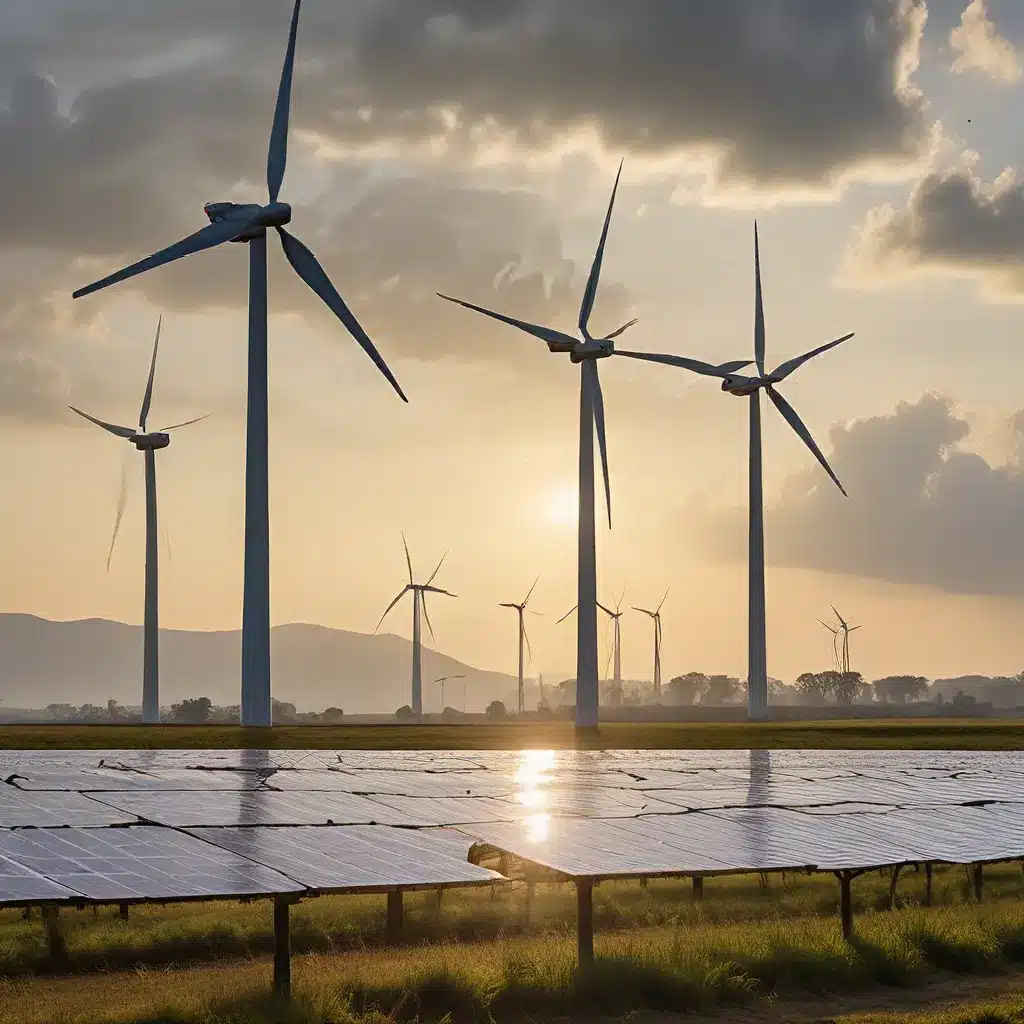
Navigating the Delicate Tightrope of Progress and Preservation
As I sit here, sipping my coffee and staring out at the lush greenery surrounding my home, I can’t help but ponder the intricate dance between renewable energy solutions and the conservation of our precious landscapes. It’s a topic that has been weighing heavily on my mind, and I’m sure many of you share my concerns.
On one hand, we’re facing the undeniable need to transition to more sustainable energy sources in order to combat the looming threat of climate change. The urgent call for clean, renewable power has never been louder, and we have a responsibility to heed that call. But on the other hand, the very land we hope to protect is often the same land that holds the key to our renewable energy solutions.
It’s a conundrum that has vexed policymakers, environmentalists, and energy experts alike. How do we balance the push for renewable energy development with the equally important need to safeguard our natural habitats and ecosystems? It’s a question that requires nuance, careful consideration, and a delicate balancing act.
Renewable Energy’s Footprint: Striking the Right Balance
One of the primary concerns when it comes to renewable energy and land use is the physical footprint of these technologies. Solar farms, for example, require large swaths of land to install the necessary panels, while wind turbines can also occupy significant acreage. And let’s not forget the infrastructure needed to support these systems, from transmission lines to access roads.
The Biden-Harris administration has recognized this delicate balance, and they’ve taken steps to address it. Through their “Balanced Conservation and Development” strategy, they aim to “guide the responsible siting of renewable energy projects” while also “conserving important lands and waters.”
It’s a noble and much-needed initiative, but the reality is that the path forward is anything but straightforward. Every project, every location, every ecosystem is unique, and what works in one area may not be suitable for another. It’s a complex tapestry of competing interests and priorities that requires a deft touch and a willingness to explore innovative solutions.
Navigating the Tradeoffs: Conservation Versus Development
One of the key challenges is that renewable energy development and land conservation are not always mutually exclusive. In fact, they can sometimes be complementary, with renewable projects serving as a means to protect and enhance natural habitats.
For example, solar farms can be designed to incorporate pollinator-friendly plantings, providing crucial habitat for bees, butterflies, and other vital pollinators. And wind turbines can be strategically placed to avoid sensitive ecological areas, while still harnessing the power of the wind.
But the reality is that there will always be tradeoffs, and tough decisions will need to be made. Sometimes, the most suitable location for a renewable energy project may conflict with the need to preserve a critical habitat or protect a fragile ecosystem. And in those cases, policymakers and stakeholders must weigh the pros and cons with the utmost care and consideration.
As the Oregon Conservation Strategy notes, “Land-use changes can have both positive and negative impacts on wildlife and habitats.” It’s a sobering reminder that there are no easy answers, and that every decision carries the potential for both benefits and consequences.
Fostering Collaboration and Innovation
So, how do we move forward in a way that balances the needs of renewable energy development with the imperative of conservation? The answer, I believe, lies in fostering a spirit of collaboration and innovation.
We need to bring together policymakers, energy experts, environmental advocates, community leaders, and other stakeholders to find creative solutions that serve the greater good. Rigorous scientific research, data-driven decision-making, and open dialogue will be key to navigating this complex issue.
At Firewinder, we’re committed to being part of this solution. We believe that renewable energy and land conservation are not mutually exclusive, but rather two sides of the same coin. Our team of experts is dedicated to developing innovative renewable energy technologies and deployment strategies that minimize the impact on sensitive ecosystems.
But we can’t do it alone. We need the collective wisdom and expertise of all those who care about the future of our planet. By working together, sharing knowledge, and embracing a spirit of compromise, I’m confident that we can find a way to harness the power of renewable energy while preserving the natural wonders that make our world so beautiful and vibrant.
Embracing the Complexity, Celebrating the Progress
As I reflect on this issue, I’m reminded of the famous quote by Carl Sagan: “The world is so exquisite with so much love and moral depth, that there is no reason to deceive ourselves with pretty stories for which there’s little good evidence.” It’s a sentiment that I believe applies perfectly to the challenge of renewable energy and land use.
The reality is that this is a complex, nuanced, and often contentious issue. There are no easy answers, no silver bullets, and no one-size-fits-all solutions. But that doesn’t mean we should shy away from it. Instead, we must embrace the complexity, celebrate the progress we’ve made, and continue to push forward with a sense of purpose and determination.
The future of our planet depends on it. The well-being of our communities depends on it. And the legacy we leave for generations to come depends on it. So, let’s roll up our sleeves, put our heads together, and find a way to harness the power of renewable energy while safeguarding the natural wonders that make our world so extraordinary.

